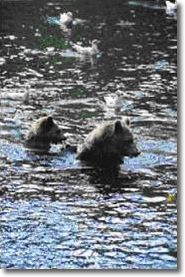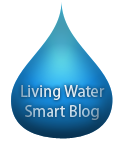B.C. is seeing intense competition among users for water and for natural ecosystem functions like fish rearing. A certain amount of water flow is required in a stream so it can function like nature intended; this is
sometimes referred to as the
“instream flow”. Inadequate flows are causing a reduction in fish-food supply, habitat loss, loss of connectivity, impaired water quality and an increase in water temperatures.
Recognizing water flow requirements for ecosystems and species is an important measure to guarantee the ongoing health and sustainability of the ecosystem. A policy to recognize water flow requirements can provide certainty for users in the watershed about exactly when and how much water is available.

Current water flow requirement tools that the Ministry of Environment and others are already working with include:
- Guidance for assessing instream flow needs related to water-power projects.
- The Vancouver Island region provides water resource information (maps) indicating times when water is available for diversion to storage and when water cannot be taken from a river.
- Reports describing the hydrology, water use and conservation flows for various fish species throughout B.C. such as the Okanagan Lake Basin (Rood 2001) and Fraser River Action Plan (Rood and Hamilton 1995).
Visit the new Water Sustainability Act site to find out what changes are being proposed in the Water Act Modernization project.
What can you do?
- Save electricity. Most of the electricity used in British Columbia comes from water power. Using less electricity means that less water is required to be diverted from a stream to generate power.
- Developers should seek expert advice on long-term water supply conditions and flow needs of fish as they relate to when, where and how much water is to be diverted.
Did you know?
- Water flow requirements vary across the province according to natural water supply and ecosystem needs.
- B.C. has a history of rapid population growth and water allocations/use dating back to the late 1800s. In many cases, water supply limitations were unknown and fish were not part of water licensing decisions. Many smaller streams areas fully recorded or fully allocated meaning water supply is now severely limited and streams often go completely dry.
Graphic of flow on Coast and flow in interior.

Water is used in three main ways:
- Fish and other wildlife live in (stream flows are “home”) or use water. The environment relies on water being left in the stream so it can function naturally (ecosystem needs) and this also applies to biology such as fish flow needs;
- Humans remove water out of the stream for domestic uses, electricity generation, irrigation and many more uses (consumptive uses); and
- Humans use water in the stream – for navigation, recreation, fishing, tourism and landscape values (instream uses).

While the protection of fish and fish habitat is often the primary consideration for water flow requirements, dilution of waste discharges, recreation and navigation and First Nations traditional uses can also be protected.



 Water is used in three main ways:
Water is used in three main ways:
